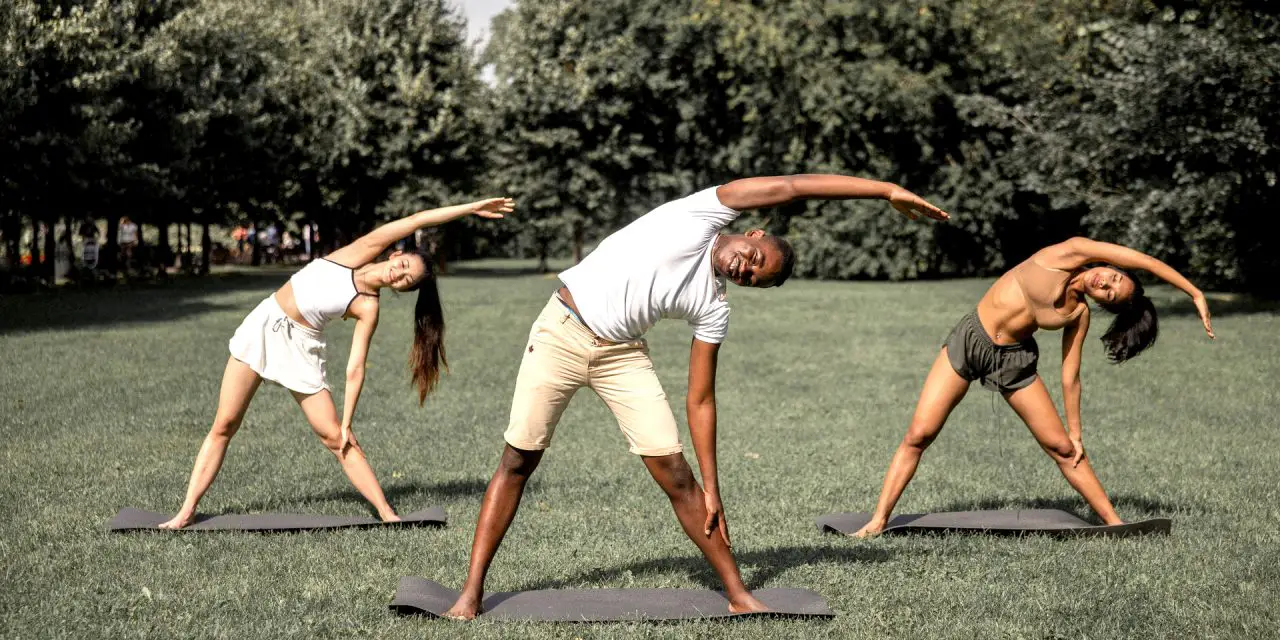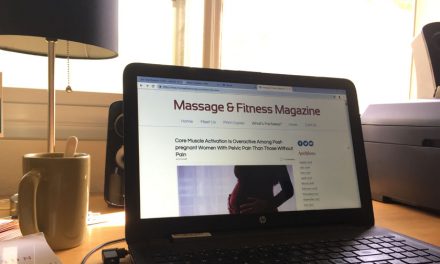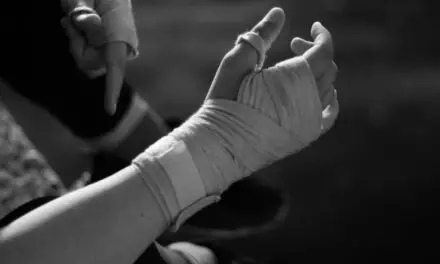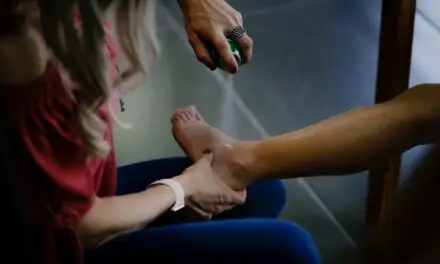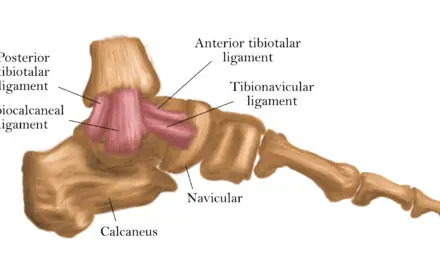Tight muscles get blamed for a lot of things. Don’t feel good when you bend down to feed the dog in the morning? It’s because your back muscles are tight. Having neck pain while you sit at your desk to work or texting? It must be tight muscles. Pulled a “hammy” playing adult-league kickball? Tight muscles must be the culprit!
In reality, muscles don’t get tight or short in most cases. This isn’t to say you don’t feel tight, only that the sensation of tightness doesn’t correlate with measurable changes in the length of the muscle tissue.
While a lot of people avoid movement because they feel tight, the sensation of tightness may actually be your body’s gentle reminder that it’s time to move!
Think about how you feel near the end of a long car ride. After hours of sitting your hamstrings, low back, and neck muscles are screaming, “Move!” All it takes to feel better is a few minutes of standing, walking, and moving.
What causes tight muscles?
The tightness you feel in your muscles are the neurological system’s way of preventing injury. There’s a mechanism in the muscle—the muscle spindle—that senses stretching and sends a signal to the surrounding joints and soft tissues that they may be close to being stretched too far, which triggers the tightness you feel.
Most of the time, muscles aren’t actually tight; they just feel tight. But under certain conditions, they may actually get tight.
For example, prolonged immobilization (i.e. a cast or other immovable device) can cause tight muscles where the muscle fibers shorten and some range of motion is lost. A few visits to physical therapy are usually enough to regain motion in this situation.
Similarly, women who wear high-heeled shoes five days a week for 20 years may find that their calves become shortened. It takes time, but with progressive stretching, this length can be restored too.
Do tight muscles cause pain?
There’s no simple answer to this question. Do tight muscles inherently cause pain and muscle soreness? Probably not. Lactic acid? Not likely. Are there conditions that involve them that are also associated with pain? Yes. Can pain cause muscle tightness? You bet.
Conditions such as tension-headaches/migraines and cervical dystonia are diagnoses where both muscle tightness and pain are hallmark signs and symptoms. Unfortunately, much of medicine is a grey area, and it would be nearly impossible to prove the muscle tightness caused the pain.
It seems that the physiological mechanisms responsible for pain relief go beyond simply relaxing muscles. This is likely why medical references tend to say the tightness is associated with pain, not the cause of pain. One is not a result of the other, but they do seem to have some sort of relationship.
In conditions where pain causes tightness, the tightness may be protective. For instance, if you fall and break your femur (thigh bone), your quadriceps and hamstrings will create an internal “splint” by clamping down on the fracture in an effort to prevent further injury.
Those with episodic low back pain also describe a “seizing up” of the muscles immediately after their first sensation of pain. In low back pain, these spasms seem to be a combination of voluntary and involuntary muscle contraction.
How to loosen tight muscles?
Realistically, we don’t actually loosen anything when we address tight muscles. Rather, we improve our tolerance to the discomfort felt at the end-range and as that tolerance and range of motion improves.
For example, a study of 40 college-aged men and women investigated the use of stretching to improve flexibility on a sit-and-reach test. Participants stretched 12 muscle groups twice a week for six weeks using a combination of static and dynamic techniques. In this cohort, stretching was an effective tool as both males and females improved their sit and reach by approximately 2 cm and 3 cm, respectively.
Foam rolling, which has become wildly popular, is another tool for improving range of motion when muscles feel tight. A recent systematic review and meta-analysis compared the effects of foam rolling and stretching on performance.
Foam rolling fared better than static stretching, particularly when rolling lasted more than one minute or when the roller included vibration. When compared to dynamic stretching, non-vibratory foam rolling created the same magnitude of performance effect.
If you’re short on workout time but want to address your muscle length, you can skip stretching. Recently, strength training has emerged as an effective strategy for improving muscle length, too!
One of the newer interventions on the “decrease muscle tightness” scene is dry needling. It’s tough to say that it does what it purports to do, but the subjective reports of improvement from those who have undergone the treatment are hardly meaningless.
A study in the British Journal of Sports Medicine looked at dry needling versus sham needling in a double-blind trial. Fifty-nine male athletes had their range of motion and pain measured after a single needling session to their gluteal trigger points, which were measured at 24 and 72 hours after treatment.
Range of motion (straight leg raise and internal rotation) were unchanged by either intervention across the 72 hours; however, both groups reported similar improvements in subjective pain and tightness at all time points. In other words, sham dry needling “worked” just as well as the real version.
Do you need deep tissue massage work to loosen tight muscles?
There’s no reason to seek deep tissue massage to loosen tight muscles. In fact, the best massage therapy sessions combine several different types of body work to effect change in the neuromuscular system.
“Massage does not need intense pressure to be effective. The goal of massage is to communicate safety and relaxation to the nervous system, which allows the nervous system to turn off the message it is sending to the muscles to hold tension” said licensed massage therapist Samantha Ream, who is the Director of Massage Therapy at ReQuest Physical Therapy in Gainesville, Florida.
Ream said that the term deep tissue “was designed to separate more intense work from Swedish massage which uses lighter, flowing strokes.”
“The spa industry has perpetuated the misnomer that deeper MUST be better by charging more for deep tissue work when, in reality, most patients would benefit from varying levels of pressure during a session, depending on the area of the body being worked on and the amount of tension being held.”
Thanks to biomechanical models, we have known that increases in range of motion after stretching were likely a result of improved tolerance to the end-range position since the early 1990s. Even with that knowledge, here we are in 2022 with entire businesses being built on being strapped to a table and having someone stretch you.
While this feels good and will likely improve your range of motion, next time you feel like your muscles are tight, it might be worth trying other techniques to address the perceived tightness—you may even find one that’s more effective than our beloved stretching!

Penny Goldberg, DPT, ATC
Penny Goldberg, DPT, ATC earned her doctorate in Physical Therapy from the University of Saint Augustine and completed a credentialed sports residency at the University of Florida. She is a Board Certified Clinical Specialist in Sports Physical Therapy.
Penny holds a B.S. in Kinesiology and a M.A. in Physical Education from San Diego State University. She has served as an Athletic Trainer at USD, CSUN, and Butler University.
She has presented on Kinesiophobia and differential diagnosis in complicated cases. Penny has published on returning to sports after ACL reconstruction and fear of movement and re-injury.
Outside of the clinic, Penny enjoys traveling, good cooking with great wine, concerts, working out and playing with her dogs.

